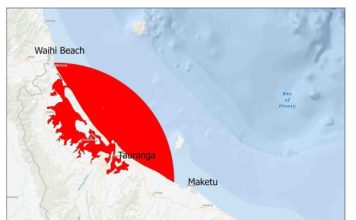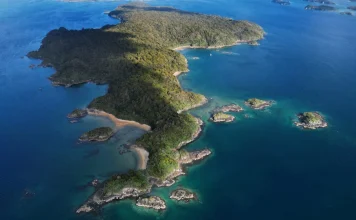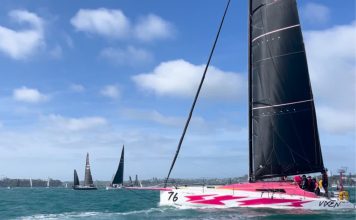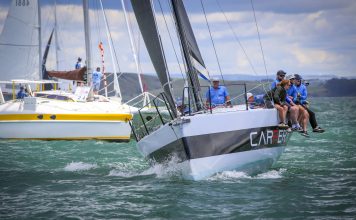Meanwhile, third-placed Yoann Richomme (PAPREC ARKÉA) has already made his move. Opting for safety, he has repositioned himself 185 miles north of the leaders’ route, well clear of the system’s most dangerous core. Though this tactical retreat may cost him miles to the chasing pack, Richomme prioritises keeping his boat and himself in peak condition as the race intensifies 500 miles west of the Kerguelen Islands.

Thomas Ruyant (VULNERABLE), currently in fourth place, is expected to follow a similarly cautious course. While a high-pressure ridge to the west may offer temporary respite, these calculated moves underscore the unrelenting hazards of solo racing in the world’s most remote waters.
Navigating the storm
For Sébastien Simon, who trails Charlie Dalin by just 12 miles, the storm is a daunting test of resilience and seamanship. Speaking from aboard Groupe Dubreuil, the skipper admitted, “The road stops dead. We will just have to be very careful and cautious with the boat. Let the worst of the storm pass by in the hope that we get through it without a hitch.”
Simon’s apprehension is palpable. Reflecting on his past experiences with severe storms, including 67-knot winds during The Ocean Race in 2023, he said, “I know it’s not pleasant at all, but there’s no escape. It’s not going to be easy for anyone. We’re going to suffer.”
Despite their northern shift, the leaders remain at the mercy of the elements, with the next 48 hours set to test their mettle and their machines to the limit.
Battling adversity: pip hare’s repair marathon
While the leaders contend with the storm’s wrath, further back in 17th place, Briton Pip Hare is waging her own battle aboard Medallia. After a failure in her keel’s canting system, Hare faced a gruelling 24 hours of repairs.

The issue required her to replace a faulty relay, a task complicated by strong winds and a lurching boat. When her initial attempts failed, she ingeniously cobbled together a working relay from two damaged ones, restoring functionality. However, her ordeal didn’t end there.
Shortly after, a furling line snapped, causing sails to flap wildly and inflicting damage on her masthead gennaker and FR0. Hare managed to repair the tear in her FR0 and plans to fix the gennaker during the next calm patch. Reflecting on the relentless challenges, she said, “It has been a tough day, carnage really, but I need to just keep taking it step by step. We can get through this.”
Recovering from close calls
Not all sailors have escaped unscathed. Manu Cousin, skipper of Coup de Pouce, is still recovering from a terrifying incident with a UFO (unidentified floating object) that struck his boat two days ago.
“My routings actually put me behind this big system, which is pretty good,” said Cousin. “That gives me a bit of time to recover from the psychological shock. I really thought my race was going to end there. I was really scared.”

Cousin’s relief at dodging the worst of the storm highlights how the Vendée Globe pushes solo sailors to their limits, testing their endurance, resourcefulness, and mental toughness.
An unforgiving ocean
As the fleet navigates this latest challenge, the Southern Ocean continues to remind these intrepid sailors of its unrelenting power. For the leaders, it’s a game of risk management; for others, like Pip Hare and Manu Cousin, it’s about survival and recovery.
With the fleet stretched across thousands of miles, every decision is magnified, every error costly. Yet, amidst the chaos, the spirit of the Vendée Globe—courage, perseverance, and determination—shines through.




















